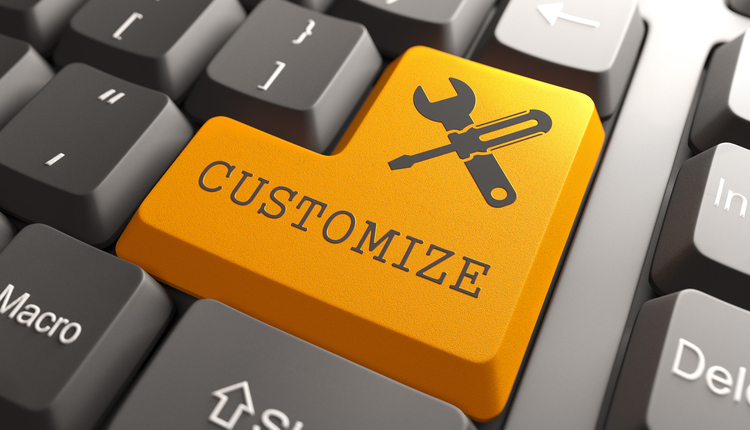If you’re in the market for order fulfillment services, there’s one question that’s probably at the top of your list: What’s it going to cost?
As is often the case, the answer is, “it depends” – on lots of things
One sign that you’re dealing with a top-quality fulfillment company is the depth of fact gathering they go into as part of the pricing process. Yes, it creates some work for you. But it results in the most accurate order fulfillment services pricing. Better to nail an accurate estimate from the start than to have to explain to the boss three months in that the price is going up 25%.
The following chart includes questions your potential fulfillment partner should be asking – all presented in a convenient table format that explains the rationale behind each question.
| What 3PLs need to know | Why we need to know it |
| Describe the products – number, dimensions, weights, etc.
| Your 3PL’s engineers will need this data to determine how much storage and picking space will be needed, how to store the product, and how large a pick front is required. |
| What’s the ratio of palletized vs. floor-loaded inbound shipments?
| In order to get an accurate bead on the labor, time and space required to receive shipments, a 3PL needs to know as much as possible about how efficiently goods were packed and staged by suppliers and vendors farther up the supply chain. |
| What is the SKU makeup of your inbound shipments? | The more individual SKUs you have per shipment – and the less stratified those SKUs are – the longer it will take your 3PL to offload them properly. Detailed responses to this question will help prevent unexpected dock delays and unwanted sticker shock later. |
| Do you have any products that require special storage (temp-controlled), stock rotation (FIFO, FEFO) or handling processes? | Your response could impact everything from where a 3PL proposes to store your product (and storage cost) to what capital improvements will be needed before a go-live date. |
| What is the average weight of your standard pallet or carton? Can pallets be stacked? If so, how high?
| The most-effective storage configuration depends on information like this. For example, the weight of a product may lead to the use of different, more durable racking than currently used.
|
| How many unique SKUs will be in storage? | Unless it’s going straight from the dock to your pick line, each SKU you sell must have its own unique slot or bin in a fulfillment center. More SKUs equal more space requirements (and expense). Precise data here will ensure accurate order fulfillment pricing.
|
| Are there any value-added services your orders require – for example, tasks like kitting or carton/unit labeling? | One of the most common reasons for inaccurate fulfillment pricing is failing to account for all of the work needed before an order ships, especially work that is considered beyond the scope of standard order picking.
|
| Does your company have seasonal or fluctuating demand that causes sharp order spikes? | The more information your 3PL has about your peaks and valleys, the better it will be able to protect you from unnecessary extra expenses such as expedited shipping, last-minute temporary staffing, or overtime. |
| Describe the current process for order packout. Be specific!
| Whether you respond with a verbal description or decide to supply pictures or videos instead, this is probably one of the most important questions you need to answer in detail, because the packout stage is usually when the most product touches (and fulfillment expenses) occur. Complete input here will result in accurate pick and pack pricing. |
| Please describe your current process for returns (volume, RMA requirements, damaged inventory processes, etc.)
| Your 3PL needs to ensure that it has properly estimated the space and staffing required to process returns, which are typically more work and systems-intensive. |
| What is the monthly velocity of each SKU? | This detail will enable your 3PL’s engineers to design a warehouse layout that maximizes picking efficiency for your most popular products.
|
| Describe your ideal method of integrating your order flow with a 3PL’s systems?
| Seamless order flow is critical to a successful onboarding process. You absolutely don’t want to give short shrift to systems integration and how data will flow between your systems and your 3PL’s systems. Start early, test and re-test. Systems requirements may impact order fulfillment pricing, so the quicker you address any issues, the better. |
Embrace the Detail in the Pricing Process
With the right data in hand, 3PLs can usually knock out an accurate price estimate pretty quickly. The data gathering may take a little time on your side, but it’s well worth it if the goal is accurate order fulfillment services pricing. You want a 3PL partner that is thorough. Generic pricing does not work in the fulfillment industry, as each account has nuances that will impact pricing.
If you are asking for price estimates from multiple providers, remember to provide each with the same set of data or it will be hard to make an apples-to-apples comparison.
Order fulfillment is a detail business, so embrace that detail. The more data a provider has, the better its ability to design a solution that completes pick/pack/ship tasks in less time using the least amount of space.
Harry Drajpuch is CEO of Amware Fulfillment, a national logistics company that helps brands scale direct-to-consumer fulfillment operations to keep pace with business growth. With fulfillment centers in every region of the country, Amware enables one- to two-day delivery to 98% of the US.
This article originally appeared in the November/December, 2020 issue of PARCEL.


















